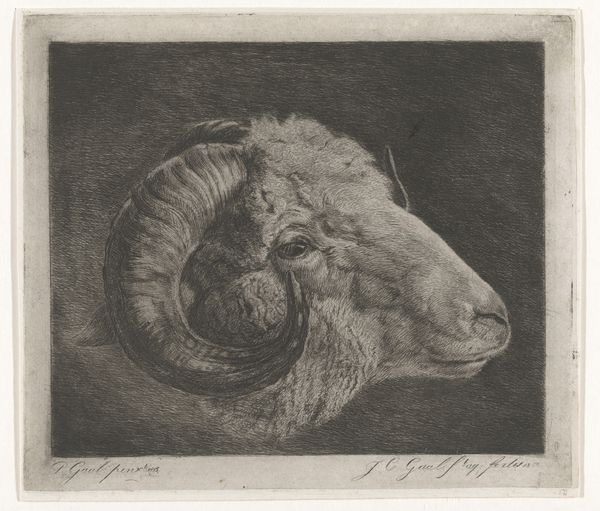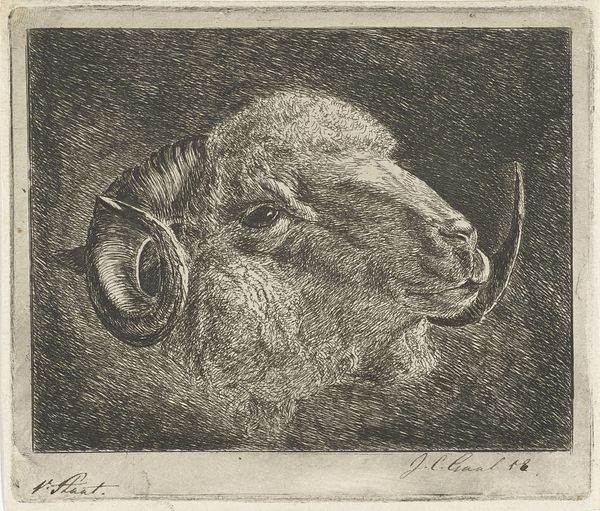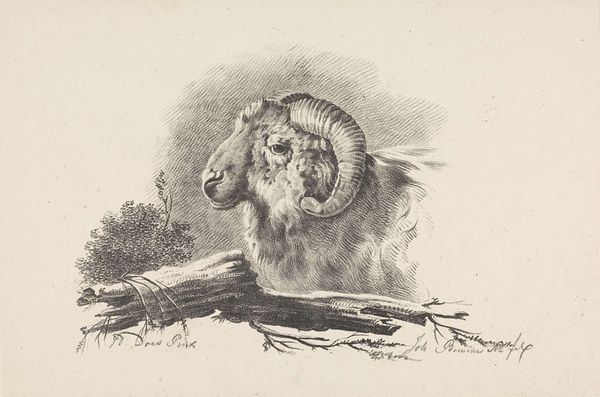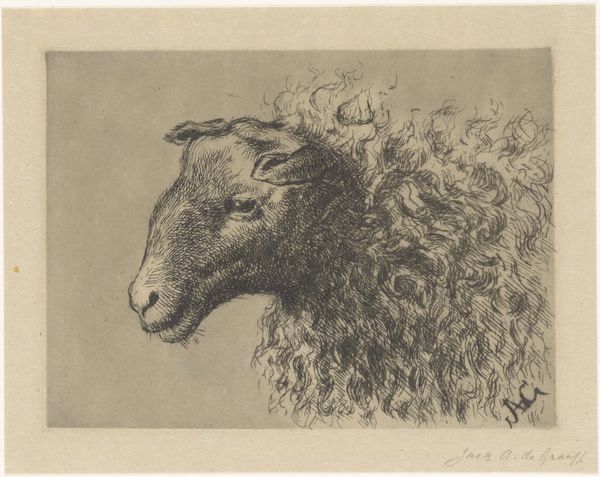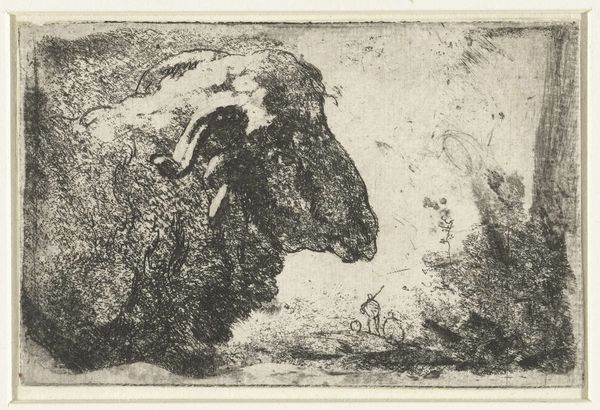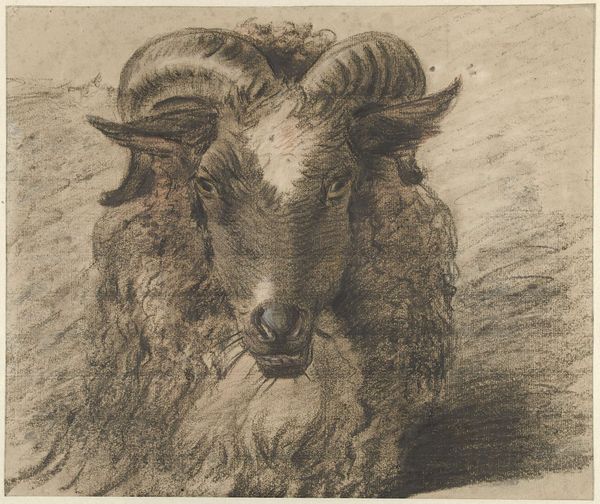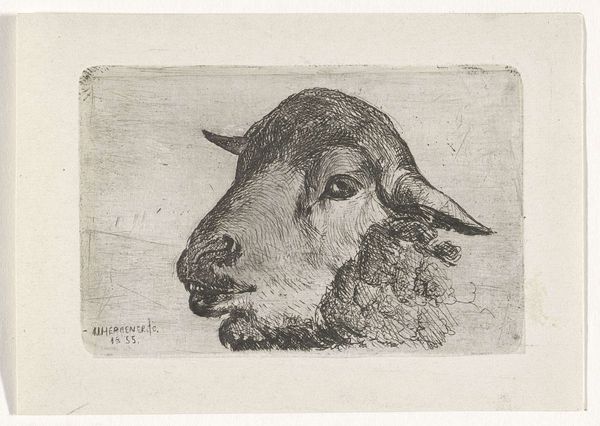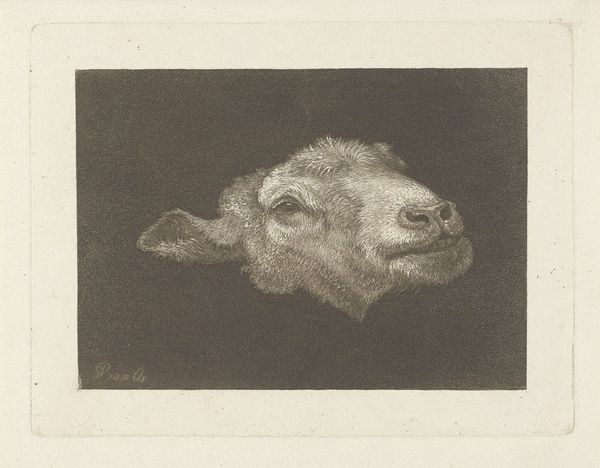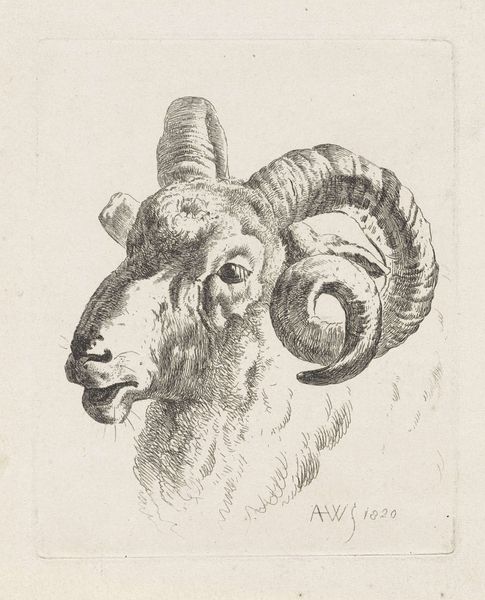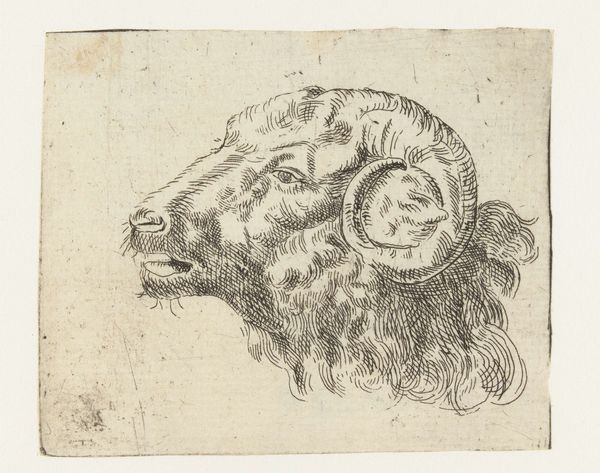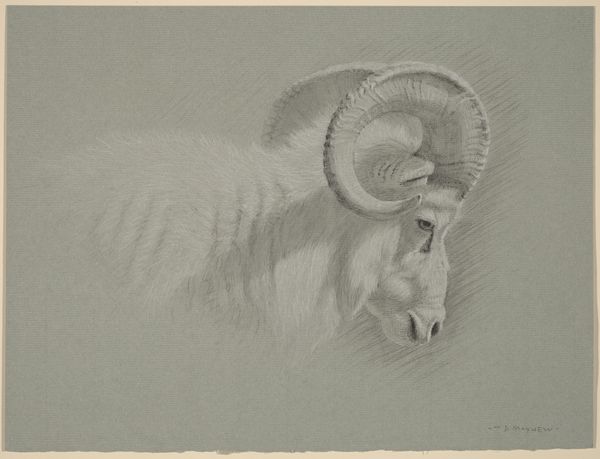
drawing, pencil, graphite
#
portrait
#
pencil drawn
#
drawing
#
16_19th-century
#
pencil sketch
#
pencil drawing
#
pencil
#
graphite
#
realism
Dimensions: height 150 mm, width 170 mm
Copyright: Rijks Museum: Open Domain
Editor: Here we have Jacobus Cornelis Gaal's "Head of a Ram with Horn Curving Towards the Eye", made around 1855, using graphite and pencil. It feels quite somber, almost monumental. What do you see in this piece, considering its place in art history? Curator: Well, what strikes me is how the ram’s head, isolated against that dark background, becomes almost iconic. The horn, coiling so tightly towards the eye, becomes a powerful symbol, doesn’t it? Think of the ram across cultures – Aries the Ram representing a new beginning and leadership. Do you see those associations echoed here, or something different? Editor: I suppose I was seeing something more subdued; the dark tones made it feel almost like a memento mori. But I see what you mean about the ram being a symbol. It’s interesting that the horn is obscuring the eye... is there a specific meaning? Curator: It is a fascinating detail, isn’t it? Perhaps the artist intended for the symbolism of new beginnings, and impulsive action, to be read as a cautionary tale; in which case that obscured vision becomes central. It’s an interesting choice to pair strength with a certain blindness. Don't you find it compelling how artists chose specific attributes? Editor: Yes, definitely. I was just focusing on the detail and the rendering itself, but your reading really unlocks the potential symbolism that I initially missed. Thanks. Curator: And thank you for making me look beyond the obvious and consider how tone shapes our initial interpretations of powerful images.
Comments
No comments
Be the first to comment and join the conversation on the ultimate creative platform.

